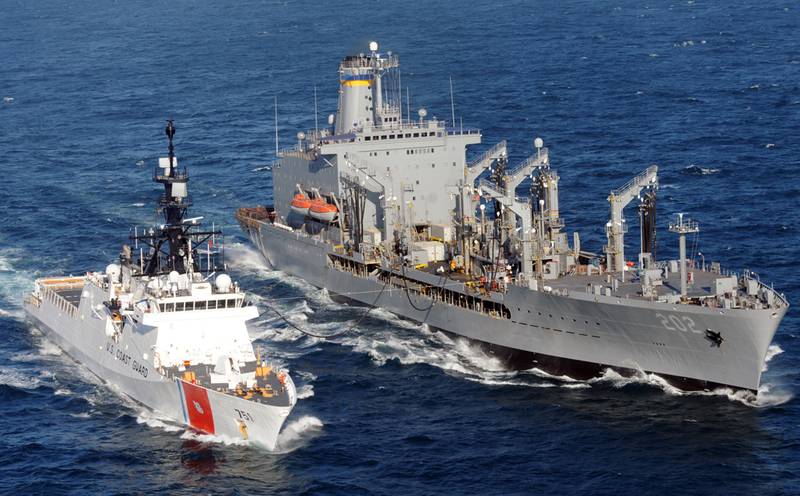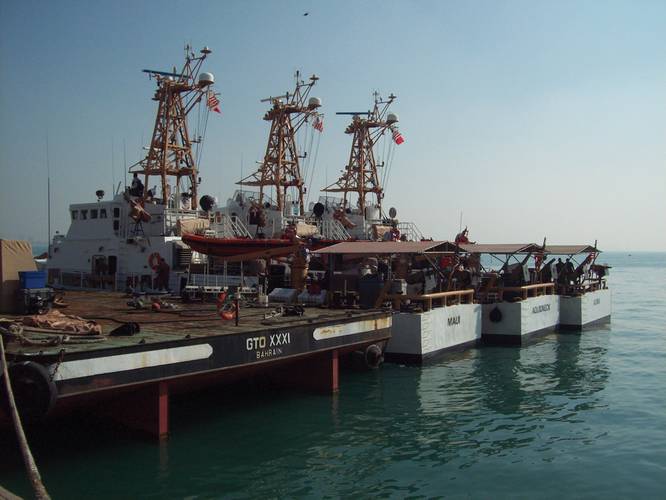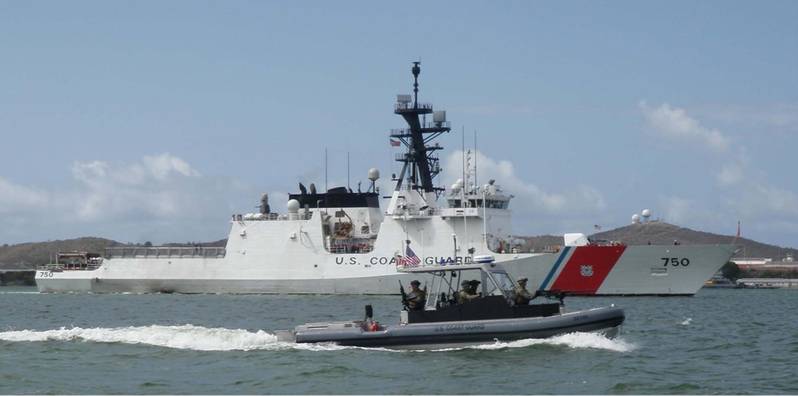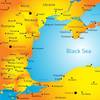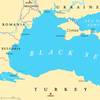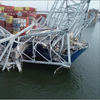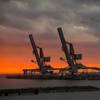USCG Makes Headway in Challenging Waters
Day after day, the U.S. Coast Guard continues to conduct its 11 statutory missions with its limited resources. It is challenged to Invest in long-term operational capacity while continuing to carry out its daily missions.
“We’re a small service, but as always, we do punch above our weight class,” said Coast Guard Commandant Adm. Paul Zukunft during the 2015 Surface Navy Association symposium in Arlington, Virginia.
While the Coast Guard may have drifted off course with its ambitious and holistic Deepwater recapitalization effort, the service is now on track to replace its high and medium endurance cutters and patrol vessels with three new classes of ships. Construction for two of the three replacement programs are underway. The 12 Hamilton-class 378-foot high endurance cutters will be replaced by eight Bertholf-class 418-foot National Security Cutters (designated as WMSLs). The Coast Guard’s aging 110-foot Island-class and 87-foot patrol boats are being replaced with the 154-foot Sentinel-class fast response cutters. That leaves the replacement for the 14 210-foot Reliance and 270-foot Famous (also known as the Bear class for the lead ship of 13 ships) medium endurance cutters, which will be the yet-to-be-determined Offshore Patrol Cutter or OPV.
National Security Cutter
Four of the new NSCs have joined the fleet, with three based on the Pacific coast at Alameda, Calif., and the fourth and most recently commissioned, USCGC Hamilton, commissioned in December 2014 and now homeported at North Charleston, S.C. All eight of the NSCs are being constructed in Pascagoula, Miss., by the Ingalls Shipbuilding division of Huntington Ingalls Industries. While there are many differences between the NSCs and the earlier 378s, the biggest difference the ship’s information systems capable of handling classified information, and advanced sensors and combat management capabilities.
The NSC is the largest and most capable general-purpose cutter in the Coast Guard fleet as is designed for long-endurance independent operations. According to the Congressional Research Service, the NSC procurement cost averages about $684 million per ship.
The NSC is specifically designed to launch and recover both long range interceptors and short range boats, helicopters and unmanned aerial vehicles at high sea states. The ship features an aircraft hangar and stern ramp for launch and recovery of boats.
The NSC is armed with the MK110 57mm gun, which is also found on both variants of the Navy’s littoral combat ship. The NSC also has the Phalanx Close-in Weapon System (CIWS) for point defense.
The combined diesel and gas turbine (CODAG) propulsion system uses a GE LM2500 gas turbine and two MTU 20V1163 diesel engines delivering nearly 50,000 shp, with a top speed of 28 knots and a range of 12,000 and endurance of 60 days at economical cruising speeds.
High Endurance Operations
Bertholf and her sisters can operate independently or be fully integrated in fleet operations. USCGC Wasche took part in the RIMPAC 2014 multinational fleet exercise in the waters off Hawaii and southern California.
The WHECs and now the NSCs are able to conduct extended fisheries patrols, which is vital to protect the vast U.S. economic exclusivity zones (EEZ), particularly in the Pacif. Altogether, the total U.S. EEZ is the largest in the world, and includes 200-mile limits around such far flung possessions as American Samoa and the Northern Marianas. Transiting between those zones takes the cutters through neighboring EEZs of countries without the reliable means to patrol their waters, so the Coast Guard takes shipriders aboard who have law enforcement authority. The U.S. has shiprider agreements with the Cook Islands, Kiribati, the Federated States of Micronesia, the Marshall Islands, Nauru, Palau, Samoa, Tonga, and Tuvalu.
Offshore Patrol Cutter
The Offshore Patrol Cutter will be the replacement for the 270 and 210 foot medium endurance cutters (WMECs) of the Famous and Reliance classes. These ships are old, especially the 210s, some of which have seen 50 years of service.
Three companies were selected to produce preliminary and contract designs for the OPC. Of the three, Bollinger Shipyards of Lockport, La., has experience building ships for the Coast Guard. General Dynamics Bath Iron Works in Maine makes destroyers for the Navy, but the OPC is a much smaller ship. The third company, Eastern Shipbuilding of Panama City, Fla., hasn’t built ships for either of the sea services. Each of the contracts, awarded in February of 2014, are worth about $22 million. While we know what will go on the ships—the 57 mm gun and government-specified C4ISR systems, we don’t really know what the three design will look like yet.
When the contract awards were announced, then-Coast Guard Commandant Adm. Robert Papp said that The OPC program, “is the most important — not just shipbuilding — but the most important acquisition program that the Coast Guard has done in its history.”
Fast Response Cutter
The Coast Guard’s 154-foot Sentinel-class Fast Response Cutter is based on the successful Damen Stan 4708 patrol vessel design, which was key to the low-risk acquisition strategy (Damen has delivered a number of similar ships to other navies and coast guards). The construction contract was awarded to Bollinger Shipyards of Lockport, La. A total of 58 FRCs will be built. Most recently the 11th (USCGC William Trump), and 12th (USCGC Isaac Mayo) ships of the class were commissioned or delivered, and will be based at Key West.
The 353-ton vessels are armed with a remote-control stabilized 25 mm Bushmaster machine gun and four, crew-served.50-caliber machine guns. They are equipped with a stern ramp boat launch and recovery system and can achieve speeds of more than 28 knots. The FRCs have a 22-person crew and have a range of almost 3,000 nm. And an endurance of five days.
Forward Deployed Patrol Boat Os
While a part of the Department of Homeland Defense, the Coast Guard is a military force with a global presence, with bilateral and multi-lateral agreements with over twenty-nine maritime nations in the Caribbean and in Central and South America to help conduct Coast Guard missions of law enforcement, fisheries protection, search and rescue and environmental and pollution response
Like the U.S. Navy coastal patrol boats (PCs) in the Arabia Gulf, the six forward deployed Coast Guard 110-foot patrol boats (WPBs) are operating in a high threat environment every day conducting VBSS (visit, board, search and seizure) boarding and “approach and assist” engagements with the many fishing and trading dhows. Until the mission was turned over to the Iraqi Navy in 2011, PCs and the WPBs also protected the large oil terminal platforms in the northern gulf, and they still conduct various types of maritime infrastructure protection, freedom of navigation exercises, and escorts of high-value units. Compared to stateside WPBs, the forward deployed cutters assigned to US Coast Guard Patrol Forces Southwest Asia in Bahrain have twice the “op tempo,” meaning more days at sea. Speaking at the Surface Navy Association symposium, Zukunft said that the same patrol boat squadron model being employed in Bahrain would be very beneficial in Central America.
The Coast Guard frequently worked with the Navy to embark USCG law enforcement detachments (LEDETS) on USN ships supporting counter drug operations for the Joint Interagency Task Force South at Key West, operating in the Caribbean and eastern pacific. But the last U.S. Navy Oliver Hazard Perry class deployment is under way now, and the Navy’s presence in the region will be reduce, along with the opportunity to vary the LEDETS. To pick up that mission, the Coast Guard will have to deploy more ships.
Icebreakers
Ironically, the diminishment of multi-year ice in Arctic has increased the need for ice breaking and ice capable vessels. Less ice means more traffic and activity that could require a response by the Coast Guard. And “ice diminished” doesn’t mean “ice free.” The Arctic is still an unforgiving place. There are more things that can go wrong in polar waters, and when they do the consequences are greater. The Coast Guard’s newest polar icebreaker—the Healy—was commissioned in 2000. It’s a medium polar icebreaker, but more appropriately it should be considered a research ship with icebreaking capability.
The Coast Guard’s two heavy polar icebreakers—Polar Star and Polar Sea—have served beyond their originally intended 30-year service lives. Polar Star was placed in caretaker status in 2006 but returned to service in 2012 following extensive repairs which should give her another 7 to 10 years of service, and is now in Antarctica supporting the National Science Foundation mission there. The Polar Sea suffered a major engineering casualty in 2010 and is now in an inactive status, but studies are being undertaken to see if she can be repaired and reactivated. In FY2013, the Coast Guard initiated a new project for the design and construction of a new polar icebreaker. The project received $7.609 million in FY2013; $2.0 million in FY2014; and requested $6 million more in FY2015. The new polar icebreaker would replace Polar Star at about the time Polar Star’s 7- to 10-year reactivation period ends.
But despite the discussions and budget analysis about repairing, extending service life, or beginning design and construction of a new icebreaker, the U.S. will be in need of more icebreaking capability than the Coast Guard can afford to provide to meet requirements in polar waters.
Small Craft
Small craft have a big role and a sizeable presence in the Coast Guard, including quite capable boats carried aboard larger ships. The Bertholf-class NSC carries three boats, including the 35-foot Long Range Interceptor (LRI) and the Cutter Boat Over the Horizon IV (OTH-IV), carried aft in the stern boat deck. The third boat, an OTH IV or MK 3 Zodiac RHIB, is carried amidships and launched and recovered over the side utilizing a standard two-hook davit.
The Coast Guard plans to procure up to 101 of the 26-foot OTH-IVs. The Long Range Interceptor II (LRI-II) from Metalcraft Marine US Inc., of Cape Vincent, N.Y., and Brunswick Commercial and Government Products, of Edgewater, Fla. SAFE is the manufacturer of the USCG OTH-IV. The service is also procuring the Response Boat - Medium (RB-M), being built by Marinette Marine (the prime contractor) and Kvichak Marine. Half of the boats are being built by Marinette’s ACE Marine, a wholly owned subsidiary of Marinette Marine, i in Green Bay WI. Seattle-based Kvichak is building the other half.
The response boat-medium is designed to meet a broad spectrum of Coast Guard mission requirements, including search and rescue; ports, waterways and coastal security; smuggler and illegal migrant interdiction.
Kvichak Marine is building the 32’ Transportable Port Security Boats (TPSB), an all-aluminum vessel operated by a 4-person crew and featuring shock mitigating seats, ballistic armor protection and up to four mounted weapons. The Coast Guard currently operates more than 400 Defender-class Response Boat – Small (RB-S) boats, and is now working to bring the RB-S II into the fleet to replace the Defender-class RB-S.
The RB-S replacement—which could eventually reach as many as 500 boats—is one of the largest boat buys of its type for the Coast Guard. Metal Shark Aluminum Boats of Jeanerette, La., is the contractor for the production of 29-foot Defiant-class RB-S IIs. The contract allows for the procurement of up to 500 boats for USCG shore stations and options for orders from Customs and Border Protection and the U.S. Navy.
While this article focuses on new construction, the service must also keep the existing fleet maintained and repaired. The Coast Guard’s ship yard at Curtis Bay, near Baltimore, has provided much needed maintenance to keep the 270-foot Medium Endurance Cutter fleet operating and is conducting a service life extension project for the service’s 140-foot ice breaking tugs.
The U.S. Navy is responsible for the Coast Guard’s “Navy Type Navy Owned” weaponry, which can also include sensors, combat management systems, ammunition, training and sustainment. Examples include the AN/WLR-1 and AN/SLQ-32 electronic countermeasures systems; the AN/SPQ-9B radar; MK 46 torpedoes; and the MK 75 76mm/62 caliber gun weapon system, to name a few. This ensures the Coast Guard will be ready to fight alongside the Navy in time of war, and that the systems will be interoperable with each other. The U.S. Coast Guard’s Hamilton-class and Famous-class cutters have the same MK 75 gun system and MK 92 fire control system as the Oliver Hazard Perry (FFG 7) guided missile frigates. As the Perry’s are being decommissioned, engineers at Naval Ship Systems Engineering Station (NAVSSES), Naval Surface Warfare Center Carderock Division are harvesting weapon system components from decommissioned FFGs for re-use on the cutters, with an expected cost avoidance of more than $24 million.
Fixed-wing Maritime Patrol Aircraft
The service was able to take possession of 14 new C-27J Spartan medium-range transport aircraft that the Air Force didn’t want. Although the Coast Guard hadn’t planned or budgeted to take this new aircraft into its inventory, it was too good a deal to pass up. There’s significant commonality (avionics, engines) with the services larger four-engine C-130J Super Hercules,
Although the Coast Guard had evaluated the C-27 previously, the service selected the Airbus North America HC-144A Ocean Sentry for its maritime patrol aircraft. The Ocean Sentry is based on the CN235-300M twin-turboprop. But getting the C-27s essentially for free changed the “total life cycle cost” equation. Now the Coast Guard is halting the HC-144 acquisition at 18 aircraft. The C-27s require some slight modifications, such as adding radar and EO/IR sensors, but are otherwise ready for maritime patrol, drug and migrant interdiction, humanitarian assistance and search and rescue missions.
Unmanned Systems
The service has evaluated unmanned systems such as the Puma and Scan Eagle unmanned aircraft system (UAS). USCGC Bertholf’s UAV testing actually contributed to a significant drug bust when the UAS detected and `tracked a go-fast vessel and helped direct Bertholf’s cutter boats and embarked helicopter for to interdict the suspects with 600 kg of cocaine.
Leveraging Smart Ideas
How can the Coast Guard properly execute the service’s 11 missions in the current austere budget climate? “It means that we need to get creative,” says Bert Macesker, executive director of the Coast Guard Research and Development Center (RDC) in New London, Conn. “Innovation is hugely important to the Coast Guard. It involves looking at better and new ideas—both technology-based as well as non-material approaches—that offer improved solutions to requirements that we have.”
Innovation Program Manager Cmdr. Tyson Weinert says a new software platform will soon connect the service’s targeted problems with the Coast Guard’s active duty, civilians, reservists, and auxiliarists. He says new innovation-based methods will bring stakeholders together—from the people on the deckplates to the acquisition community. “We’re pairing up these innovators with the program and platform managers so they can actually be part of a process.”
(As published in the March 2015 edition of Maritime Reporter & Engineering News - http://magazines.marinelink.com/Magazines/MaritimeReporter)







